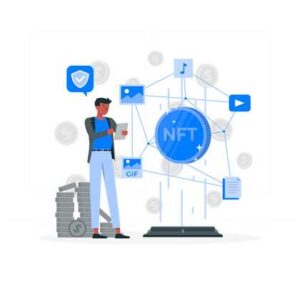
Master Cryptocurrency and Blockchain: A Step-by-Step Guide
Introduction
Master Cryptocurrency and Blockchain: Discover how cryptocurrency and blockchain are reshaping finance with their decentralized power. Whether you’re new to these technologies or seeking to expand your knowledge, this guide from UpToSkills provides a detailed exploration.
Internal Links:
Outbound Links:
- Add outbound links to authoritative sources that provide further information on cryptocurrency and blockchain:
The Origins of Cryptocurrency

Cryptocurrency began with Bitcoin in 2009, introducing decentralization to transactions.
Major Cryptocurrency Historical Events
- 2009: Genesis of Bitcoin
- Bitcoin’s introduction and the mining of its genesis block.
- 2010: First Bitcoin Transaction
- The historic purchase of two pizzas for 10,000 BTC.
- 2011-2013: Emergence of Altcoins
- Introduction of Litecoin, Ripple, and Ethereum, expanding the cryptocurrency market.
- 2017: The ICO Boom
- Initial coin offerings (ICOs) gained popularity as fundraising methods.
- 2020-2021: Rise of DeFi and NFTs
- Decentralized finance (DeFi) and non-fungible tokens (NFTs) gained prominence, showcasing blockchain’s versatility.
How Blockchain Technology Works

Blockchain serves as the foundation for cryptocurrencies, operating as a decentralized digital ledger.
Core Principles of Blockchain
- Decentralization: Distributed ledger across nodes ensures no central authority.
- Transparency: Public visibility of transactions promotes trust.
- Security: Cryptographic algorithms secure transactions.
- Immutability: Irreversible records ensure transaction permanence.
Types of Blockchains
- Public Blockchains: Open and decentralized (e.g., Bitcoin, Ethereum).
- Private Blockchains: Restricted access (e.g., for enterprise use).
- Consortium Blockchains: Controlled by a group (e.g., in sectors like banking).
Impact of Cryptocurrency and Blockchain
Cryptocurrency and blockchain technologies have transformative effects across industries, including:
- Financial Inclusion: Enabling access to financial services.
- Transparency and Security: Benefiting supply chain management.
- Financial Innovation: Revolutionizing lending and trading through DeFi.
Challenges Facing Cryptocurrency and Blockchain
Despite their potential benefits, challenges include:
- Regulatory Hurdles: Governments navigating frameworks.
- Scalability: Increasing transactions strain network capacities.
- Security Concerns: Risks in exchanges and wallets.
- Energy Consumption: Sustainability issues with proof-of-work blockchains.
Future Prospects

Key developments shaping the future include:
- Integration with Traditional Finance: Blockchain for cross-border payments.
- Advancements in Interoperability: Projects enhancing blockchain compatibility.
- Expansion of DApps: Secure decentralized applications.
- Enhanced Privacy Solutions: Innovations balancing privacy and transparency.
Conclusion
Mastering cryptocurrency and blockchain is crucial as they redefine finance and beyond, offering opportunities in a dynamic landscape.
Additional Resources





